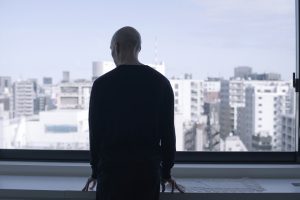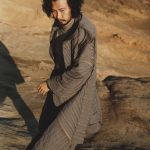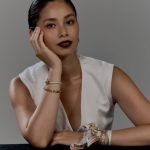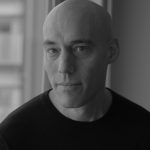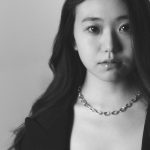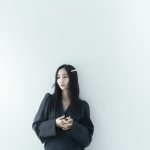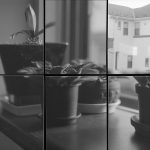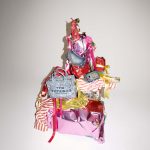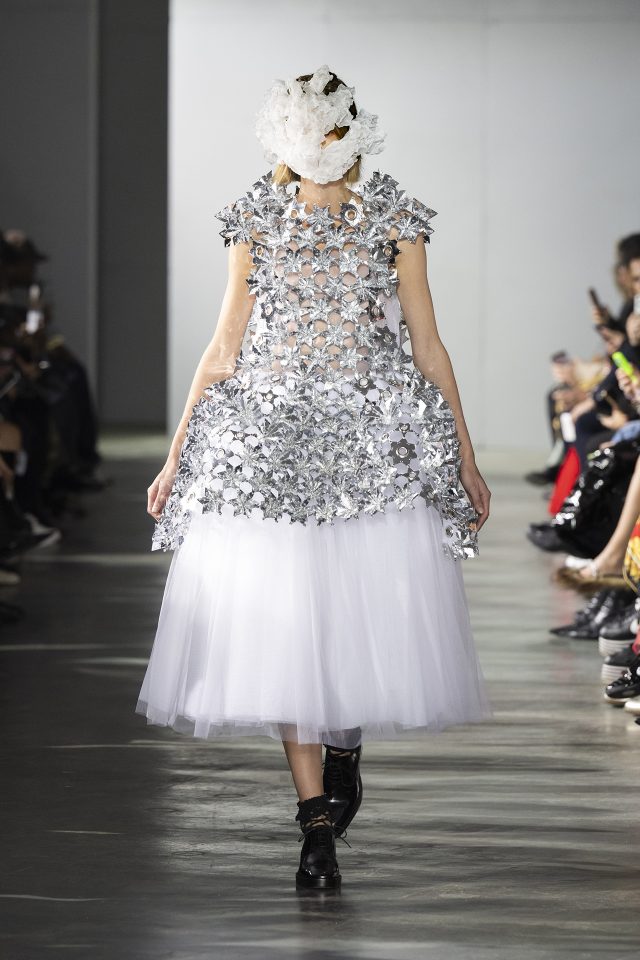『The Reality Show』編集長、Tiffany Godoy (ティファニー・ゴドイ) インタビュー
Tiffany Godoy
東京のファッションシーンを語る上で欠かせない人物、Tiffany Godoy (ティファニー・ゴドイ)。アートディレクター、米津智之氏とともにハイファッションと東京のストリートファッションの架け橋となる媒体『The Reality Show (ザ・リアリティー・ショー)』を立ちあげ、去年パリにベースを移した彼女の目にうつる東京のファッションとは?
『The Reality Show』編集長、Tiffany Godoy (ティファニー・ゴドイ) インタビュー
Magazine
*You’ll find the English text after the Japanese.
東京のファッションシーンを語る上で欠かせない人物、Tiffany Godoy (ティファニー・ゴドイ)。1997年に来日して以来、ファッションエディター兼コンサルタントとして、東京のファッションシーンをドキュメントし続けてきた彼女。『style.com』『New York Times』『WWD』『V』『Self Service』『Encens』といった海外の有名ファッション媒体でも活躍している。2年前にアートディレクター、米津智之氏とともにハイファッションと東京のストリートファッションの架け橋となる媒体『The Reality Show (ザ・リアリティー・ショー)』を立ちあげ、去年パリにベースを移した彼女の目にうつる東京のファッションとは?

—去年パリに移住しましたが、東京に14年間住んでいましたよね。自己紹介もかねてなぜ来日したのか教えてください。
1990年代にサンフランシスコのナイトクラブで尋常じゃないくらいオシャレな日本人の友だちたちと出会って、日本に一目惚れって感じだったの。彼らの美的センスがすごく新しく思えて、欧米のものとぜんぜん違っていたわ。なぜこんなに違うのか気になったから大学を卒業した年の夏に東京に行って、結局住み続けることになったの。そこでファッションエディターとしてのキャリアをスタートさせたってわけ。『Composite (コンポジット)』や『Studio Voice (スタジオ ヴォイス)』といった当時最先端の日本の雑誌で働いて、それから自分のフリーランス仕事もはじめたの。そしてすぐにアートディレクターの米津智之と一緒に「Erothika(エロティカ)」っていうクリエイティブユニットを立ちあげて、日本のストリートファッションについての本を3冊書き上げたの。そうしたらテレビ番組の司会をしたり、トレンドやブランディング、エキシビションなどのコンサルティングもするようになった。2年前には自分の雑誌『The Reality Show (ザ・リアリティ・ショー)』をはじめて、パリの「Art Director Management」に所属することが決まったからパリに移住したの。最近だと Veuve Clicquot や Givenchy Parfums のパッケージ制作の仕事をしたり、Chanel のクチュールに特化した『The Reality Show』の3号目とそのビデオを作ったりしてたわ。あと shu uemura でブログを書いたり、『nowness.com』やその他の媒体でも仕事をしてる。いまは東京とパリ、あとときどきメキシコシティを行き来する生活をしていてとても楽しい!
—はじめて来日したときの東京の印象は?
新しくて、独特で、変わっていて、おもしろくて、あとわけが分からなかった。。自分の精神的な面で。看板を読んだり、会話をふと耳にしたりできない環境にいるといろいろなことに反射してしまう。最初はなにをしたいか分からなかったけど、東京でなにか新しいことができるとは感じていたの。いままでよく知っていた物事が日本風に適応されて編集されていたからすべてが新鮮に思えた。ギャルの文化も主流になりつつあって、原宿の『Fruits』ガールズたちもそこら中にいたし、すごくおもしろかった。ずっと吹っ飛んでる感じですごくよかったの。


—日本のファッションウィークについてはどう思いますか?東京のシーンをにぎわしている結構多くのブランドが参加していないですよね。盛り上げるためにはどうしたらいいのでしょうか?
これは私が日本に住みはじめたときから問題になっていることね。私も関わって盛り上げようって一時期なっていたこともあったけど、ファッションにもいろいろなタイプがあって、おもしろいブランドの多くはすごく小さなスケールで展開していたりもするの。ファッションウィークにはお金と政治の問題がすごくあると思う。なにが変かって、ショーの時期だけ耳に入ってくるブランドの多くがショップで見つけることができないってこと。東京のファッションシーンに本当の意味で影響をあたえる最重要ブランドはすごくしっかりとした自分たちのブランディング戦略を持っていて、自分たちなりの方法で、自分たちのやりたいときにコレクションを発表しているの。この点はリスペクトね。でもみんなが協力して同じ時期にコレクションを発表したらPRやセールスの面で効果があるとも思うけど。あと、日本のブランドは従来のランウェイ方式に沿う必要はないと思う。実際ほとんどのブランドはするべきじゃないかも。日本のブランドの一番おもしろいところは、彼らのショップ内で作りだす世界観やカルチャー。ただの洋服だけじゃなくて世界観があるの。洋服を毎シーズン発表するときにこの点をうまく伝える最善の策は?いまファッションフィルムも重要性を増してきているし、ランウェイ方式じゃないプレゼンテーションもとても可能性があると思うわ。
—日本の若いブランドが大きくなるにはどうしたらいいですかね?
ファッションメディアとファッションビジネスのモデルの両方が変わってきている。『T Magazine (ティー マガジン)』用の取材で、日本のショップやブランドに大震災後に日本のストリートファッションはどう変わったのかについて聞いていたときに新しい可能性を見つけたの。いまはショップも顧客とよりダイレクトにコンタクトを取っていて、新しい商品が入荷したとか、ショップスタッフが企画していることとか、どんな音楽を聴いているのかとか毎日やりとりしたりしている。ショップやブランドは以前と同じ方法で成長する必要はないと思う。小規模でもピントを合わせていけばいい。顧客と直につながっているから。もちろん、オンラインでのセールスも有効ね。個々のアイデンティティを維持して、強いブランディングとオリジナリティ、優秀なサービスをそろえられればいいと思う。もし海外に行きたいならさらにそれぞれのレベルを上げないとね!

—いま注目している若手デザイナーはいますか?
デザイナーというより、いまはコミュニティーをサポートしたいと本当に強く思ってるの。ファッションに興味がある人の数がショッキングなくらい日本では減ってしまったから、ファッションやリテール、音楽の分野の才能豊かな若いクリエーターたちと仕事をしてサポートするようにしているのよ。一緒にブレインストームもするわね。以前はクリエイティブスポットだった原宿が商業化してしまったからいまは渋谷と高円寺が以前の原宿の役を担っていると思うの。「CANDY」や「Sister」「Grimoire」や「キタコレ」の子たちと会った話しながら時間を過ごすのが大好き。クリエイティブな若者はこういうファッションのコミュニティーに集まっているの。あと、日本の若手ブランドだけを取り扱う「XANADU TOKYO (ザナドゥ・トーキョー)」っていうショップのオーナー、本橋達郎と話すのも大好き。彼のところで扱っている Nyte っていうブランドは可能性があるわね。Chanel のイベントで私が着ていた Nyte の洋服を Carine Roitfeld が大絶賛していたわ。森川マサノリの Christian Dada もすごくうつくしいメンズウエアね。シルエットと質感がすごくいいの。flake のアクセサリーも好きだけど、値段をもう少し下げる必要があるかな。「DOG」っていうショップのセレクションも最高で、すごくいい。
—米津智之さんと「Erotyka」というクリエイティブユニットを組んでいますが、お二人はどのように出会ったのですか?「Erotyka」についても少し教えてください。
「Erotyka」はネーミングからプロダクトデザイン、ビジュアルディレクションまで、なんでもするクリエイティブユニットなの。すごくエッジがきいているんだけど、同時にエレガントな美意識を持っていて、それを作業対象に吹き込んで、私たちのアイデアをとても専門的でテーラード的に具体化させるのよ。私たちの出会いは、お互いにアシスタントだったころで、私は当時日本で最も最先端のインディペンデント・ファッション誌だった『Composite』で働いていて、米津は「Enlightenment(エンライトメント)」でヒロ杉山さんのところで働いていたの。彼らの本を編集していたんだけど、私は日本語をほとんど話せなかった。でも机の上に Grace Jones の大きな写真を置いていたのを見て米津が私に興味を持ってくれたみたい。ほとんど会話はできなかったけど、お互いの美的センスがすごく似ていることに気づいて、お互いぜんぜん違うけどお互いを補えるスキルを持っていることも分かったの。これは今日でも言えることね。それでお互いフリーランスになってから一緒に仕事をしようとしたけど、経済の変化にともなってクライアントもどんどん保守化していってしまって、私はエディトリアルの仕事、米津はアートディレクションの仕事にフォーカスするようになってしまったの。でも『Style Deficit Disorder (スタイル ディフィシット ディスオーダー)』っていう本を書いたときに彼にデザインを頼んだのよ。はじめて絶対にやりたくないって思ったエディトリアル・プロジェクトだったみたいだけど、無理矢理やってもらったわ。なにかにつながるって分かっていたから。実際にそうなったし。

—米津さんと二人で『The Reality Show』を2年前に立ちあげましたが、その理由は?
『Big Magazine (ビッグ マガジン)』から東京特集の件で連絡があったのがキッカケなの。たくさんリサーチして完ぺきなアプローチを見つけたんだけど、その雑誌が廃刊になってしまって。でももうやるかやらないかの問題だったから自分たちでやろうってことになって、はじめたのよ。カルチャー的にも世代的にもすごくベストなタイミングだったと思う。日本のファッション誌の歴史を見ても、ここ10年以上、すごく影響力のある雑誌は登場していなかったし。あとアジアがラグジュアリーファッションやビューティブランドにとってとても重要になってきているっていうことにも助けられたかな。なにかやるしかない。挑戦する時期って感じたのよ。
—パリに住んでみてどうですか?
パリには以前住んでいたことがあるから、すごく心地いいの。建物やミュージアムとか、キレイなものにかこまれることができて最高ね。シーズンの合間にデザイナーたちと会ったり、毎回のコレクションのはじまりの段階でどう進んでいくのかとかも見れるわね。いまは本気でフランスのファッション界におけるラグジュアリーとでんとうを勉強して、自分の仕事の糧にしようとしているところなの。私は本当にオタク気質だからいろいろ勉強するのが好きで、そうやってモチベーションを上げていくの。でも東京のユースカルチャーにじかに触れられないのも残念ね。彼らのファッションを通しての自己表現とかも直接は見られない。

—日本のブランドがパリで成功するには、なにが不可欠ですか?パリの壁はそうとう厚そうです。。
強烈なアイデンティティーと質の高いプロダクトね。日本のメンズウエア・ブランドはすごくいいから海外市場でもいけると思う。伝統的な洋服にすごく細かいディテールを加えたり、おもしろいブランドコンセプトを世界中の男性に語りかけることができる。ウィメンズはメンズより大変ね。日本の女性観は海外のものとはかなり違うし、いまはなんでもカワイイの時代だから。
—東京でおすすめの場所を3つ教えてください。
渋谷
日本の基準でいえば汚くて混みあっているけど、若者が集う場所だからすべてのスタイルを見ることができる。東京で最も優れたショップもいくつかあるし。「Rag Tag(ラグタグ)」から「109」「CANDY」まで、渋谷ではなんでもすべて手に入る。歩いている人を見物するのもたのしい場所ね。
高円寺
とてもオールドスクールなところで、本当に日本にいる気分を味わいたかったらここ。
中目黒
木々がたくさんあって、すごく静かなところ。最近できた新しい「TSUTAYA DAIKANYAMA」も近くにある。ここはファンタスティック!
—パリでおすすめの場所も3つほど教えてください。
第7区
家の近所なんだけど、最高にオシャレなアンティークショップがあるの。うつくしいアールデコの絵がたくさんあってすごく欲しくなる。
クリニャンクールの蚤の市
ビンテージの洋服やオブジェを見つけるならここ。各露店に個性があって、オーナーたちと話すのもたのしいの。華やかで、いつも驚きがある。
マレ地区
友だち全員がこのエリアあたりに住んでいるし、おもしろいギャラリーや私が好きなショップがある。例えば「Noir Kennedy」とかね。
—いまはなにに取り組んでいますか?
『The Reality Show』の次号とその次の号の準備ね。旅行もたくさんしていて、「Zona Maco Art Fair」を見にメキシコシティにも行く予定よ。あとは『V magazine』や『nowness.com』といくつかのプロジェクトを進行中。
– 最後に、今後の予定を教えてください。
いまやっていることを続けて、さらにビッグに、ベターになること!
<プロフィール>
Tiffany Godoy (ティファニー・ゴドイ)
ファッションエディター、コンサルタント。1997年に来日し、『Composite』、そして後に『Studio Voice』のエディターとして活動を始める。『style.com』『New York Times』ライター、『WWD』リポーター、『Studio Voice Man』クリエイティブディレクターとしても活躍。『V』『Elle』『Self Service』『Encens』『Spur』『Vogue Nippon』『Yomiuri Newspaper』そして『honeyee.com』のライフスタイル、ファッションエディターでもある。これまでに、原宿発信のトーキョーストリートファッションの歴史を網羅した『Style Deficit Disorder (Chronicle Books, 2007)』『Japanese Goth(Universe,2009)』を刊行。また、世界中でオンエアされている NHK WORLD TV、WOWOW のファッション番組でホストも務めた。彼女の新しいファッション誌『The Reality Show』(年2回発行) が2010年6月に刊行。
Tiffany Godoy is a crucial figure in the Tokyo fashion scene. Since she moved here in 1997, she has been consistently documenting the happenings of the fashion industry and working as a fashion editor and consultant. She contributes to a diverse range of major international fashion media including style.com, New York Times, WWD, V, Self Service and Encens. Two years ago, she launched The Reality Show magazine with Tomoyuki Yonezu, a renowned Japanese art director. The Reality Show aims to connect high fashion with Tokyo’s culture of street style. Tiffany moved to Paris last year. We have managed to catch her and ask her about her own personal take on the Tokyo fashion scene.
—You moved to Paris last year, but before that, you lived in Tokyo for 14 years. Please tell us a bit about yourself, and what brought you to Tokyo.
It was love at first sight when I met a bunch of incredibly dressed Japanese club kids in San Francisco in the 90’s. Their aesthetic was so new for me, so different from an American or European sensibility. I had to find out why…so I went to Tokyo the summer after I graduated from university and ended up staying and starting my career there as a fashion editor. Worked at the edgiest Japanese publications like Composite and Studio Voice, then branched out on my own. Soon after together with art director Tomoyuki Yonezu founded the creative unit Erotyka, then wrote a couple of books on Japanese street fashion, which led me to hosting a TV show, consulting on trends and branding and exhibitions, a couple of years ago starting a magazine brand, and then getting into the agency Art Director Management in Paris-hence the move, Recently we have created some packing for Veuve Clicquot and Givenchy Parfume and launched the third issue and video of The Reality Show, No 3. focuses on Chanel Couture. I blog for shu uemura, and am contributing to nowness.com, and various publications. I am really enjoying living between Tokyo, Paris and sometimes Mexico City. Completely inspired!
—What was your first impression of Tokyo when you first arrived?
New. Different. Strange. Fun. Confusing.. It was a very internal moment. When you have no distractions like reading signs, overhearing conversations, you reflect a lot. I had no idea what I wanted to do, but felt there was something new I could do from Tokyo. Because all things familiar take on a new context in the way Japanese people adapt and edit them. So everything looked so fresh. The gyaru scene was just becoming mainstream-such a different type of femininity. Harajuku Fruits were everywhere. It was a feast for the eyes. Totally freaky and non-stop. I loved it.
—How do you view Japan Fashion Week? A number of good Japanese brands have opted not to participate in the event. What measures should be taken in order to invigorate JFW more?
This has been the same story since I have been in Japan. I was very motivated at one point to get involved. But there are so many different types of fashion, and many brands that are interesting in operating on a much smaller scale. So much politics involved as well as money in this fashion week situation. What is strange is that so many brands that you only hear about during the collection season show, I never see those brands in stores. The most relevant brands, those that have a real influence on fashion tend to have a very strong control on their branding and want to do things in their own way and show in their own way on their own time. I respect this. Though I think if everyone just tried to show during the same period it would be effective in terms of PR and sales. At the same time I don’t think Japanese brands have to use a standard runway format. In fact most of them shouldn’t. What I think is most interesting is the worlds these brands create in their stores, the cultures that surround them, it is not just about a piece of clothing, it is a world. So what is the best way to communicate this each season when presenting clothes? And in the world of fashion these days with fashion films for example becoming so important, non-runway presentations are also a very viable option.
—What do you think young Japanese brands should do to grow bigger?
I think both the fashion media and the fashion business model have changed. I saw a new possibility when I interviewed some stores and brands for T Magazine about how Japanese street fashion has changed since the earthquake. Boutiques are in direct contact with their customers, a daily dialogue of what’s new in store, what the staff is organizing or listening to. I don’t think a store or a brand has to grow in the same way as previously. Small and focused is effective since there is a direct pipe to customers. Of course online sales can be very effective in helping to grow a brand. I think maintaining identity and strong branding and originality, great service, and if they want to go abroad-bigger sizes!
—Are there any young Japanese brands you are watching right now in particular?
More than a designer, right now I am really feeling the desire to support a community. It’s really striking how the number of people interested in fashion has decreased in Japan. So I try to work with young creative people in fashion design, retail, even music who are talented to support their activities and brainstorm together. With the commercialism of Harajuku, the former creative center, has shifted to both Shibuya and Koenji. I love to meet and talk and spend time with the kids at Candy, Sister, Grimoire, and Kita-Kore. Young creative people gather around these fashion “community” centers. I also love to talk to Tatsuro Motohashi of Xanadu who carries only young Japanese designers – his brand Nyte has potential (Carine Roitfeld absolutely raved over an outfit I wore of his during the Chanel events). I think Zoo Morikawa’s Chrisitian Dada – with his strong sense of silhouette and texture – can make some very beautiful menswear. I like the accessories by Flake though he has to work on his price points. I can’t get enough of the selection at DOG. Such an incredible eye.
—You work with the art director, Tomoyuki Yonezu, under the creative unit called “Erotyka”. How did you guys meet? And please tell us something about Erotyka.
We are a creative unit working on anything from naming to product design and visual direction. Our sense is very edgy and at the same time elegant. Our aim is to infuse everything with that sense and execute our ideas in a very specialized and tailor made way. We met when we were assistants, me at the creative office behind Composite magazine, at the time one of Japan’s most fashion forward independent magtazines. Yonezu worked with Hiro Sugiyama as Enlightenment. We edited their book. I spoke little Japanese but Yonezu became curious about me thanks to a big photo of Grace Jones I had above my desk . With few words we realized our sensibility was very close, and that we both had very different but very complementary skill sets. That is true today as well. We tried working together after we went freelance but as the economy changed clients became more conservative. I focused more on editorial projects, he on his solo art direction. Then I asked him to work on my book Style Deficit Disorder, his first editorial project that he desperately wanted to turn down but I wouldn’t let him. I knew it would lead to something…and it did.
—You and Tomoyuki Yonezu launched “The Reality Show” magazine two years ago. Why did you start this up?
We were approached by Big Magazine about doing a Tokyo issue. After much searching, we found the perfect approach. But the magazine folded. It was one of those now or never moments so we just went ahead and did it ourselves independently. It was simply the right timing culturally, generationally, looking at the fashion magazine scene it had been over a decade since something really influential had started up (I know, big dreams). Also the fact that Asia was becoming so important to luxury fashion and beauty brands. We felt it was the timing to put something out there and challenge ourselves as well.
—What does living in Paris feel like?
I have lived in Paris before so I feel very at home. It feels divine to be surrounded by so much beauty – the buildings, the museums. I am now able to spend time with designers between seasons too, see how they approach creating a collection from the very early stages. I am really trying to study French luxury and tradition within fashion as well to compliment and contrast my work. I am a real nerd and I love to learn so I feel very stimulated in that way. At the same time I miss the youth culture scene in Tokyo and how people express themselves more and play with fashion.
—If a Japanese brand wants to make it in Paris, what is crucial for success? Paris seems really difficult to penetrate.
A strong identity and product. I think menswear from Japan is very strong and translatable to international markets – this reworking of classics adding incredible detail and having an interesting brand concept speaks to men around the world. Womenswear is more difficult because the femininity is so different and these days everything is so kawaii.
—Please recommend three hot spots in Tokyo for our readers.
Shibuya
It’s dirty (by Japanese standards) and crowded but it is the youth capital – every type of style. Some of the best boutiques of the moment are here. From Rag Tag to 109 to CANDY, you can find anything and everything. And the people watching is great.
Koenji
If you really want to feel like you are in Japan, very old school.
Nakameguro
I love Nakameguro because it is so sleepy with so many trees, and not far is the fantastic new Tsutaya book center.
—Please recommend three hot spots in Paris for our readers.
the 7th
I just love walking around my neighborhood the 7th. The most chic antique stores – drive me crazy with desire when I see a beautiful art deco table of painting.
Puce de Clignancourt
If you are seeking vintage clothes and objects. Each booth has its own character and it is so fun to talk to the owners. So colorful and always a surprise to be had.
The Marais
All of my friends live around there and there are great galleries and a few shops I like such as Noir Kennedy.
—What are you working on right now?
Getting ready for the next couple of issues already of the magazine. I am traveling a lot, off to Mexico City to check out the ZonaMaco art fair. Working with V and nowness.com on a couple of things.
—Finally, what are your future plans?
To keep doing what we are doing but getting bigger and better.
<Profile>
Tiffany Godoy
Fashion editor and consultant Tiffany Godoy has lived in Japan since 1997 when she began working as an editor for Composite and then subsequently for Studio Voice. She has consulted for style.com, contributed writings on design for the New York Times, reported for WWD, and served as creative director for Studio Voice Man. She is a lifestyle, fashion editor, and columnist for V, Elle, Self Service, Encens, Spur, Vogue Nippon, Yomiuri Newspaper, and honeyee.com. Her blog Tiffany X is featured on Paris select shop Colette’s website and in Japanese on dropsnap.jp. Ms. Godoy is the author of the Style Deficit Disorder, a complete history of Tokyo street fashion from Harajuku (Chronicle Books, 2007), Japanese Goth(Universe,2009) and is the former host of fashion TV programs aired globally on NHK World, and the WOWOW network in Japan. Her new bi-annual fashion magazine The Reality Show will be available from June 2010.
